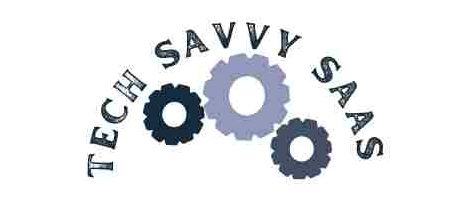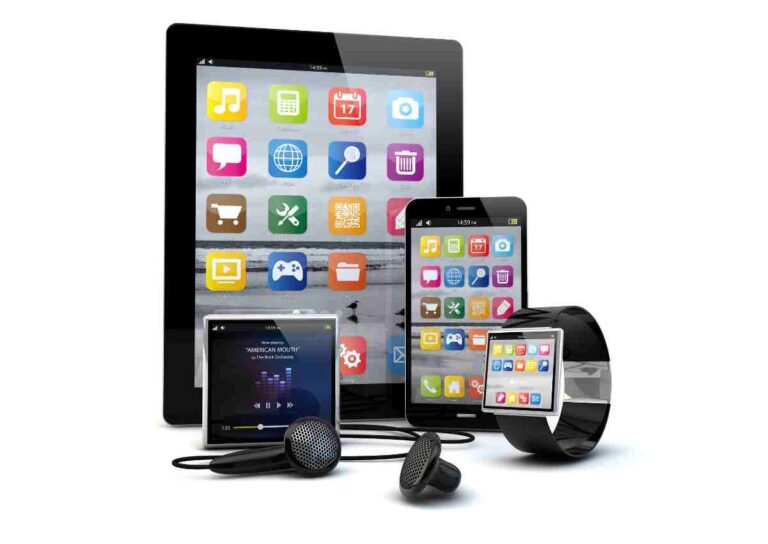Imagine a world where your morning coffee is prepared by a smart machine that remembers your favorite blend and brewing time, or a healthcare system where your diagnosis is delivered with precision by AI, reducing the need for invasive tests. These scenarios aren’t scenes from a futuristic movie; they are real innovations happening today, thanks to tech startups featured on platforms like LinkedIn, which are relentlessly pushing the boundaries of what’s possible.
Overview of the Post: This article dives deep into the hottest trends in technology that are unleashing innovation across various sectors. From artificial intelligence (AI) to the Internet of Things (IoT), we will explore how these technologies are not just evolving but revolutionizing everyday life.
Discussing the Impact: The innovations we discuss today are reshaping business models and enhancing customer experiences in industries ranging from healthcare to home automation. As these technologies develop, they bring profound changes to the fabric of business and society, opening up new opportunities for growth and efficiency.

How Are Emerging Technologies Revolutionizing Daily Life?
Artificial intelligence and machine learning are at the forefront of transforming healthcare. A notable example is the use of AI in diagnostic procedures. Research from Johns Hopkins University shows that machine learning models can predict patient deterioration in hospitals 48 hours before it occurs with an accuracy of over 85%. This early warning system allows healthcare providers to intervene sooner, potentially saving lives.
Furthermore, AI-driven tools like IBM Watson have been implemented in clinical settings to help diagnose rare diseases by analyzing vast amounts of medical literature and patient data faster than any human could. In oncology, AI algorithms are used to customize cancer treatments based on a patient’s genetic profile, leading to personalized medicine that is more effective and less invasive.
Impact on Consumer Technology: AI is not just a game-changer in the healthcare industry but also in everyday consumer technology. Virtual assistants, integrated into smart home devices, use natural language processing, a branch of AI, to understand and respond to user commands. The global smart home market, fueled by AI, is expected to reach $174 billion by 2025, according to a report by Markets and Markets. This surge is indicative of how AI is becoming an integral part of our homes, offering convenience and improved home management through devices like smart thermostats, security systems, and lighting controls.
How is the Internet of Things creating eco-friendly smart cities?
The Internet of Things is pivotal in developing smart cities that optimize resource use and reduce waste. A prime example is Barcelona’s Smart City initiative, where IoT devices manage lighting and waste collection city-wide, significantly reducing energy usage and operational costs. Sensors in waste bins transmit real-time data to optimize collection routes and frequencies, resulting in a 10% reduction in fuel use by waste collection trucks.
Real-Life Impact on Home Energy Efficiency: On a smaller scale, IoT is making homes more energy-efficient. Smart thermostats like Nest use real-time weather data and user behavior patterns to adjust heating and cooling, which can reduce home energy bills by up to 15% annually. This not only enhances the living environment but also contributes to broader environmental goals by reducing the carbon footprint of households.
How Are Sustainable Tech Innovations Shaping Our Future?
Green energy technologies, particularly solar power, are pivotal in driving the world towards a more sustainable future. Recent advancements in photovoltaic (PV) technology have significantly increased the efficiency and reduced the cost of solar panels. According to the International Energy Agency (IEA), solar power is set to become one of the cheapest sources of electricity in many countries over the next few years, with global solar energy capacity projected to reach over 1,000 GW by 2025.
Case Study: Germany’s Energy Transition (Energiewende): Germany offers a remarkable example of a national transition towards renewable energy. By 2021, about 42% of the electricity consumed in Germany will be generated from renewable sources, with solar energy playing a significant role. The country’s commitment to decommissioning all nuclear power plants by 2022 has further accelerated investments in solar and wind projects. This shift not only reduces carbon emissions but also creates jobs in new industries, illustrating the economic benefits of green energy innovations.
How Are Electric Vehicles and Public Transport Solutions Advancing Sustainable Growth?
The rise of electric vehicles (EVs) is a cornerstone of sustainable transportation solutions. The global EV market has seen exponential growth, with sales surging by 40% in 2020 alone, as reported by BloombergNEF. This growth is supported by advancements in battery technology and charging infrastructure, making EVs more accessible and practical for everyday use.
Innovations in Battery Technology: One of the most significant breakthroughs in EV technology is the development of solid-state batteries. These batteries offer greater energy density and faster charging times compared to traditional lithium-ion batteries. Companies like Toyota and QuantumScape are at the forefront of this technology, which is expected to revolutionize the EV market by making vehicles lighter, more efficient, and capable of longer ranges.
Impact on Public Transportation: Beyond personal vehicles, electric technologies are transforming public transport systems around the world. Cities like Shenzhen in China have completely electrified their public bus fleet, leading to a significant reduction in urban air pollution. The deployment of over 16,000 electric buses in Shenzhen has been complemented by a city-wide network of charging stations, showcasing how infrastructure plays a crucial role in supporting the shift to electric public transport.
How are quantum and edge computing redefining the future of technology?
Quantum computing represents a paradigm shift in computing technology, harnessing the principles of quantum mechanics to process information in ways traditional computers cannot. At its core, quantum computing relies on qubits, which can exist in multiple states simultaneously, allowing for exponentially more processing power than classical bits.
Simplifying Quantum Computing: While the concept of quantum computing may seem daunting, its potential applications are vast. For instance, in the realm of cybersecurity, quantum computers have the capability to break traditional encryption methods with ease. This poses both challenges and opportunities for data security, prompting researchers to develop quantum-resistant encryption algorithms to safeguard sensitive information.
Real-World Applications: Quantum computing is not confined to theoretical discussions; companies like IBM and Google are already making strides in this field. IBM’s Quantum Experience platform allows users to experiment with quantum circuits and algorithms in a real quantum computing environment, fostering innovation and exploration in this emerging field.
How does edge computing enhance speed and data management?
Edge computing is a distributed computing paradigm that brings computation and data storage closer to the location where they are needed, reducing latency and bandwidth usage. Unlike traditional cloud computing, where data is processed in remote data centers, edge computing processes data locally, at the “edge” of the network.
Benefits Over Cloud Systems: Edge computing offers several advantages over traditional cloud systems, including lower latency, improved reliability, and enhanced data privacy. By processing data closer to its source, edge computing minimizes the time it takes for data to travel, making it ideal for applications that require real-time responsiveness, such as autonomous vehicles and industrial automation.
Example in Mobile Networks: A compelling example of edge computing in action is within mobile networks. Mobile edge computing (MEC) enables mobile operators to deploy computing resources at the edge of their networks, reducing latency for services like video streaming and online gaming. For instance, Verizon has implemented MEC to deliver ultra-low-latency services to its customers, enhancing the overall user experience.
How are digital health solutions revolutionizing healthcare?
The COVID-19 pandemic has acted as a catalyst for the widespread adoption of telemedicine, reshaping the way healthcare is delivered. With social distancing measures in place, patients and healthcare providers have turned to telemedicine as a safe and convenient alternative to in-person visits.
Accelerated Adoption: According to a study by McKinsey & Company, telehealth usage surged from 11% of U.S. consumers in 2019 to 46% in 2020. This rapid adoption was driven by the need to minimize the risk of exposure to the virus while ensuring continued access to essential healthcare services. As a result, telemedicine visits increased by over 4,000% during the pandemic, revolutionizing the healthcare landscape.
Transforming Healthcare Delivery: Telemedicine offers numerous benefits beyond the pandemic, including improved access to care, reduced healthcare costs, and enhanced patient satisfaction. For example, rural communities, which often face challenges accessing healthcare facilities, have seen significant improvements in healthcare access through telemedicine services.
What are the real-world impacts of wearable health technology?
Wearable health technology, such as fitness trackers and smartwatches, is empowering individuals to take control of their health and well-being like never before. These devices offer continuous monitoring of vital signs, physical activity, and sleep patterns, providing users with valuable insights into their overall health status.
Advancements in Wearable Technology: The latest wearable devices are equipped with advanced sensors and algorithms that can detect irregular heart rhythms, track blood glucose levels, and even monitor mental health indicators. For example, the Apple Watch Series 6 features a built-in electrocardiogram (ECG) and blood oxygen saturation (SpO2) monitoring, allowing users to monitor their heart health and respiratory function.
Impact on Chronic Disease Management: Wearable health technology is particularly beneficial for individuals managing chronic diseases such as diabetes, hypertension, and obesity. By tracking key health metrics in real-time, wearable devices enable early detection of health issues and facilitate timely interventions. Studies have shown that continuous glucose monitoring (CGM) systems, integrated into wearable devices, can improve glycemic control and reduce the risk of diabetic complications.
How are virtual reality and augmented reality revolutionizing industries beyond gaming?
Virtual reality (VR) and augmented reality (AR) are reshaping the landscape of education, offering immersive and interactive learning experiences that cater to diverse learning styles and preferences.
Enhanced Learning Experiences: VR/AR technology allows students to explore virtual environments, interact with 3D models, and engage in simulations that bring abstract concepts to life. Research conducted by Stanford University found that students who learned through VR experiences retained information better and demonstrated higher levels of engagement compared to traditional learning methods.
Example of Immersive Learning: One exemplary use case of VR in education is the Virtual Human Interaction Lab at Stanford University. Here, students can participate in immersive simulations, such as exploring ancient civilizations or dissecting virtual organisms, providing a hands-on learning experience that transcends the limitations of traditional classroom settings.
How is AR transforming the retail experience?
Augmented reality is revolutionizing the retail industry by bridging the gap between online and offline shopping experiences, offering consumers interactive and personalized shopping journeys.
Enhanced Customer Engagement: Retailers are leveraging AR technology to create interactive product visualizations, allowing customers to virtually try on clothing, preview furniture in their home, or visualize how makeup products will look on their skin. According to a study by Interactions Consumer Experience Marketing, 61% of consumers prefer retailers that offer AR experiences, highlighting the demand for interactive shopping experiences.
Benefits to Consumer Engagement and Sales: AR-powered online shopping experiences not only enhance customer engagement but also drive sales and reduce returns. For example, IKEA‘s AR app allows customers to visualize furniture in their homes before making a purchase, resulting in a 30% increase in conversion rates for products featured in the app.
Key Takeaways
- Quick Tips: Stay informed about the latest tech trends to remain competitive in your industry.
- Quick Tips: Embrace new products and creative solutions to drive innovation in your personal and professional lives.
Conclusion
In a rapidly evolving technological landscape, it’s crucial to stay ahead of the curve and adapt to emerging trends. From the transformative potential of AI and machine learning to the sustainable solutions offered by green energy technologies, the possibilities are endless.
As we reflect on the journey through these hottest tech trends, it’s evident that innovation knows no bounds. The continuous evolution of technology is not just shaping our future; it’s shaping the world around us, redefining industries, and enhancing our daily lives.
But with great innovation comes great responsibility. As we embrace new technologies, let’s do so with ethical practices and environmental considerations in mind. Together, we can harness the power of technology for the greater good and create a brighter, more sustainable future for generations to come.
More Post






